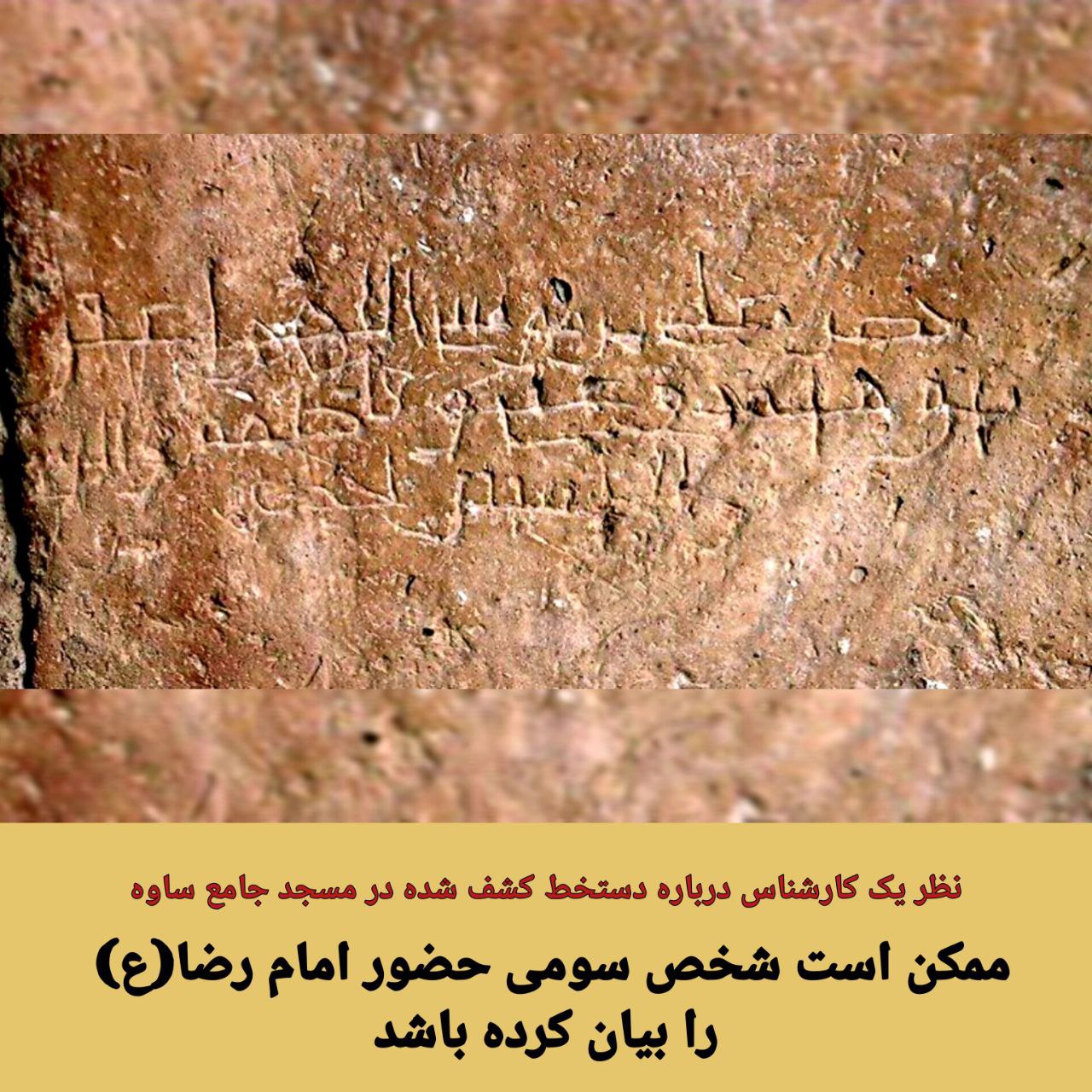An expert’s opinion about the handwriting discovered in the Jame Mosque of Saveh
A cultural heritage expert wrote in a note that he provided to the Heritage Foundation:
I would like to mention a few observations about the brick writing discussed in the Saweh Mosque:
1) The tradition of engraving on the walls is not mentioned in the biographies of Athar imams, especially the attribution of this to elders and athar imams is doubtful.
Let’s remember:
Among some sources of traditional jurisprudence, even writing verses on the walls of mosques has been questioned and sometimes faced with reluctance, let alone the fact that the imams of purification at the beginning of Islam have done this for the purpose of commemoration!
2) It is said that because it is engraved in the text, no special and formal title was considered for Hazrat Reza (a.s.) and this is a matter of saying that Hazrat Reza (a.s.) wrote the text himself, it leaves room for doubt, because in the beginning of Islam, generally from The use of ceremonial titles has been avoided, considering the text of the death of Abi Makhnaf, related to Ashura, from the second century, indicates that special titles were not used for Imam Hussain (a.s.).
3) Of course, this can be the case that someone carved this phrase. The form of Hazrat in the phrase Hazrat Ali bin Musa can refer to the third person, that is, someone has narrated the presence of the Imam in the mosque.
4) Of course, it should be noted that due to the importance of Hazrat Reza’s journey to Merv, even his footsteps have been respected throughout history, so if his presence in Saveh Mosque is true, it was a strange event!
According to the report of Bashi Heritage, after the issue became known in the media that Emaduddin Sheikh Al-Hakmai, a famous epigrapher, calligrapher and copyist of the country, discovered a handwriting attributed to Imam Reza (a.s.) during a chance visit to the Saveh Grand Mosque, the officials and experts of the Ministry of Cultural Heritage, The handwriting was separated from the wall of the historical and nationally registered Jame Mosque of Saveh and transferred to the National Museum of Iran
In this context, Fatemeh Davari, the director of the General Directorate for Preservation and Restoration of Historical Buildings, Textures and Areas, who was present at the site, said: following the speculations and possibilities raised regarding the handwritten handwriting on one of the bricks of the South Gate of Saveh Jame Mosque and the possible date In the year 201 AH, the preliminary investigations were carried out by the experts of the Cultural Heritage Institute.
As necessary, detailed comparative and laboratory studies were carried out in order to determine the authenticity of the historical authenticity of the brick, handwriting and its thematic designation by scientific institutions, coordination and necessary measures were taken to temporarily transfer the work to the National Museum to provide the context for detailed studies by the Cultural Heritage Research Institute.
In the meantime, some reactions to this discovery were strange and with sentences like lies! There is a program in mind! and was accompanied
In the field of cultural heritage, it should be noted that every discovery is accompanied by conjectures, and usually the word “attributed” is used until the truth and essence of the matter is fully investigated and there is no specific plan behind the discovery of a work or the transfer of a work that He has been in another country and has not returned to Iran.
These kinds of debates are completely expert and until the end of the experiments and scientific studies, they are accompanied by various conjectures from the experts, and sometimes an issue is a subject of scientific debate for years, or in some cases, we have to wait for science to make new discoveries to complete the previous assumptions.
Archaeologists, restorers, architects, historians, calligraphers, copyists, epigraphers, linguists, art historians, genealogists, Iranologists, museum experts, and even other interdisciplinary experts may be helped in examining a work.
https://tinyurl.com/2dlzdkhk
instagram.com/miras_bashi
@mirasbashi
This post is written by maryamatyabi
